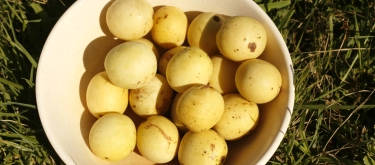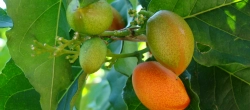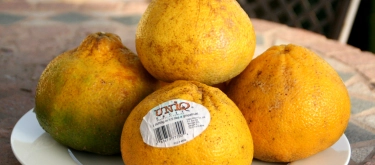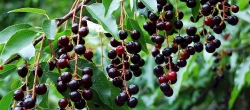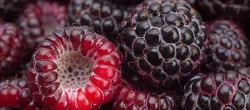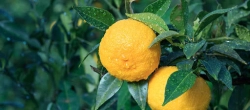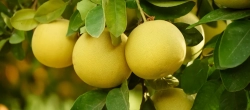Ackee: Taste, Uses, Benefits and Harm
Ackee is a unique fruit native to West Africa but most famously associated with Jamaica, where it is considered a national fruit and a staple in traditional dishes. Known for its creamy texture and mild, nutty flavor, ackee is often mistaken for a vegetable due to its savory qualities. This article explores the flavor characteristics of ackee, its culinary applications, health benefits, and tips for selecting and storing it.
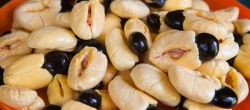
Primary Flavor Characteristics
Ackee has a delicate, slightly nutty taste with a mild buttery richness, resembling the taste and texture of scrambled eggs when cooked. Its savory flavor sets it apart from typical fruits, making it well-suited to main courses and savory dishes.
Aromatic and Taste Nuances
The aroma of ackee is mild, with faint earthy and nutty undertones. When cooked, its texture becomes soft and creamy, with a hint of sweetness that complements its buttery flavor. Ackee has a flavor profile that combines mild sweetness with a subtle umami richness.
Scientific Description of Taste and Aroma
- Aroma: Mild, with faint earthy and nutty notes.
- Taste: Subtly sweet, savory, and nutty with a buttery quality.
- Texture: Soft, creamy, and slightly firm, similar to scrambled eggs.
In-Depth Flavor Analysis of Ackee
Underlying Flavor Notes
Ackee offers a unique, savory flavor profile with several distinctive qualities:
- Nutty and Buttery Notes: Ackee has a subtle nutty richness, which is enhanced when cooked, giving it a buttery mouthfeel.
- Mild Sweetness: While not overly sweet, ackee has a gentle natural sweetness that balances its savory notes.
- Umami Undertones: Ackee has a mild umami flavor, which adds depth and makes it an excellent match for savory dishes.
Impact of Ripeness on Flavor
- Under-ripe Ackee: Unripe ackee is not only flavorless but also toxic; it must be allowed to ripen and open naturally on the tree before being picked and prepared.
- Fully Ripe Ackee: Once ripened and cooked, ackee develops its mild, nutty, and buttery flavor, with a smooth texture.
Textural Qualities
Ackee has a unique texture that is soft and creamy when cooked, yet it retains a slight firmness, similar to scrambled eggs. This texture is a major reason for ackee’s popularity in savory dishes.
Culinary Uses of Ackee
Primary Uses
- Traditional Jamaican Dish: Ackee is most famously used in the Jamaican national dish, ackee and saltfish, where it is sautéed with salted cod, onions, peppers, and spices.
- Side Dishes: Ackee can be served as a side dish, often seasoned with herbs and spices to complement grilled meats or fish.
- Egg Substitute: Due to its creamy, egg-like texture, ackee is sometimes used as a vegan alternative to scrambled eggs in certain recipes.
- Stews and Curries: Ackee pairs well with vegetables, seafood, and meats in stews and curries, adding a mild, buttery richness.
- Salads: Cooked ackee can be added to salads, providing a unique texture and nutty flavor.
Ideal Pairings for Ackee
- Saltfish: The salty, briny flavor of saltfish complements ackee’s mild sweetness and creamy texture, making it a traditional pairing.
- Herbs: Thyme, scallions, and parsley enhance ackee’s savory profile and add freshness to dishes.
- Spices: Black pepper, allspice, and Scotch bonnet peppers bring warmth and spice, balancing ackee’s mild flavor.
- Coconut Milk: Coconut milk enhances the creaminess of ackee and adds a tropical flavor, ideal for stews and curries.
- Rice and Breadfruit: These starchy foods serve as a neutral base, allowing ackee’s unique flavor to shine in the dish.
Health Benefits of Ackee
Key Nutrients and Benefits
- Vitamin C: Ackee is a good source of vitamin C, which helps boost immune health and supports collagen production.
- Potassium: High in potassium, ackee contributes to heart health by helping regulate blood pressure.
- Fiber: The fiber in ackee supports digestive health and helps maintain stable blood sugar levels.
- Essential Fatty Acids: Ackee contains healthy fats, including omega-6 fatty acids, which support heart and brain health.
- Iron and Calcium: Ackee provides essential minerals like iron and calcium, supporting bone health and oxygen transport.
Potential Precautions
- Toxicity in Unripe Fruit: Ackee contains hypoglycin A and B, toxic compounds that can cause severe illness if the fruit is consumed unripe. Only the fully ripened fruit, which opens naturally on the tree, is safe to eat.
- Proper Preparation: To ensure safety, ackee must be thoroughly cooked before consumption, as raw ackee may still contain trace toxins.

Tips for Selecting and Storing Ackee
How to Choose Quality Ackee
- Ripeness: Select ackee that has naturally opened on the tree, indicating that it is fully ripe and safe to eat.
- Freshness: If using canned ackee, ensure that the product is labeled as fully cooked and is free from preservatives for the best taste and safety.
Storage Recommendations
- Fresh Ackee: Once harvested, fresh ackee should be consumed or cooked within a day or two. Refrigerate if not using immediately.
- Canned Ackee: Canned ackee can be stored in a cool, dry place. Once opened, any unused ackee should be refrigerated and used within a few days.
- Freezing: Cooked ackee can be frozen for up to three months for later use in dishes like ackee and saltfish.
Fun Facts About Ackee
- National Fruit of Jamaica: Ackee is a central part of Jamaican cuisine, where it is celebrated in the national dish, ackee and saltfish.
- West African Origin: Originally from West Africa, ackee was brought to the Caribbean in the 18th century and became popular in Jamaican cuisine.
- Unique Nutritional Profile: Unlike most fruits, ackee is high in healthy fats, which contributes to its creamy texture and savory flavor.
